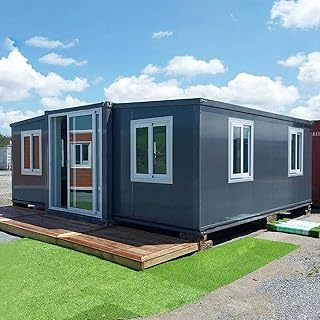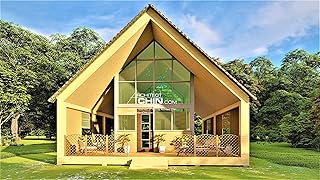Prefab homes in Australia have come a long way since their postwar origins as utilitarian structures. Architects and builders are now embracing prefabrication as a solution to rising construction costs, housing shortages, and the need for sustainable living spaces. The Covid-19 pandemic has also influenced a shift in how people view their homes, leading to a renewed interest in prefab housing.
Modscape, a leading prefab home company, is one of the firms championing this new wave of prefabricated architecture. Their CEO, Jan Gyrn, believes that prefab homes offer a faster, more sustainable building option that can meet the demands of modern homeowners. With a focus on design, sustainability, and efficiency, prefab homes are gaining traction in the Australian housing market.
Architect Peter Stutchbury, renowned for his sustainable designs, has ventured into prefab housing with Dimensions X, a project aimed at creating environmentally friendly homes that can be customized to suit individual preferences. These homes incorporate solar energy, water collection systems, and other eco-friendly features, appealing to a growing number of environmentally conscious buyers.
Warren French, principal architect at Valley Workshop, emphasizes the use of lightweight materials and innovative construction methods in his prefab designs. By focusing on thermal performance and environmental sustainability, French aims to create homes that are not only energy-efficient but also aesthetically pleasing and durable.
Despite the initial skepticism surrounding prefab homes, the industry is experiencing a resurgence, driven by advancements in technology and a growing awareness of the need for sustainable building practices. Companies like Modscape, Ecoliv, and Valley Workshop are at the forefront of this movement, offering high-quality, customizable homes that can be built in a fraction of the time of traditional construction methods.
While prefab homes may not be the norm in Australia yet, industry experts predict a significant increase in their popularity in the coming years. With a focus on quality, sustainability, and affordability, prefab housing offers a viable solution to the country’s housing crisis and the growing demand for eco-friendly living spaces.
As the industry continues to evolve and innovate, prefab homes are poised to become a mainstream housing option in Australia, offering a more efficient and sustainable alternative to traditional construction methods. With a growing emphasis on sustainability and design innovation, prefab housing is set to reshape the Australian housing market in the years to come.
📰 Related Articles
- Australian Lenders Slash Rates, Reshaping Housing Market Landscape
- Waste Paper Recycling Market Growth Driven by Sustainability Trends
- Volvo Introduces Rugged EX30 Electric SUV for Australian Market
- Triumph Motorcycles’ Tailored Triumph Street Triple 660 for Australian Market
- Toyota Ceases Australian GR Supra Orders, Shifts Focus to Sustainability






